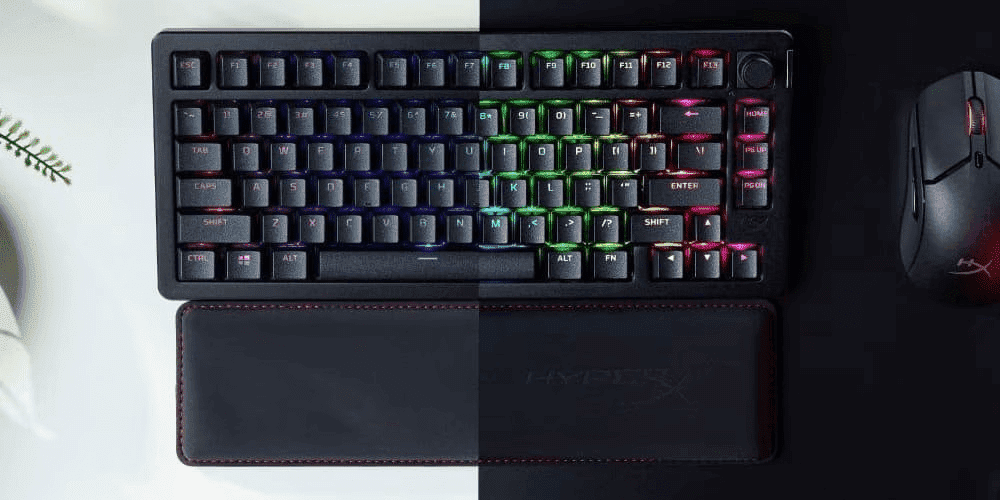Thank you for visiting the AUSTRALIA HP Store
-
Contact Us
CONTACT USCall us
- Sales
- 1300 540 516
- Technical support
- 13 23 47
Exc. public holidays
Chat with us- Our specialist are here to help
- Live Product Demo
- Sales
- 61288061500 (WhatsApp)
-

- Post Sales
- 61288061700(WhatsApp)
Exc. public holidays
Live product demo
Submit feedback We value your opinion! - My Account
How-To Optimise Your HP Monitor's Settings for Colour Accuracy

Colour accuracy is vital in fields where precise colour representation is critical, such as graphic design, photography, or any profession requiring true-to-life colour depiction. Understanding and optimising your monitor's colour settings are essential steps in this process.
Accurate colour portrayal in visual media is key to ensuring that the final output, whether a printed design, photograph, or video, is presented as intended. This level of accuracy enhances the aesthetics of your work and bolsters its credibility and effectiveness in delivering the intended message or visual experience.
The setup of your monitor plays a significant role in colour display. Without proper calibration, your monitor may present inaccurately warm or cool, overly saturated, or unbalanced colours, leading to a mismatch between what you see on the screen and the final product. In this article, we aim to assist you in achieving optimal colour accuracy to ensure the quality and consistency of your work.
Preparing for calibration
Before diving into the calibration process, it's essential to set up your workspace and gather the necessary tools so the calibration process is uninterrupted and the results are reliable.
Gathering necessary tools and resources
For precise colour calibration of your HP monitor, you'll need a reliable colourimeter or spectrophotometer to measure colour response and compatible calibration software for guidance. Using a high-resolution monitor like the HP Z24q G3 QHD Display or the HP E27u G5 27-inch QHD USB-C Monitor, with their detailed QHD panels, enhances the accuracy of these adjustments, ensuring precise colour representation for professional tasks.
Installing colour calibration software
The next step is to install colour calibration software. This software works in tandem with your colourimeter to analyse your monitor's colour output and guide you through the calibration process. Several software options are available, ranging from those provided by monitor manufacturers to third-party applications known for their precision and versatility.
Preparing the monitor environment
The environment in which you calibrate your monitor can affect the calibration's accuracy. Ensure that your workspace has consistent lighting, preferably with neutral tones, and avoid direct sunlight or harsh artificial lights that can alter your perception of colours on the screen. Also, give your monitor at least 15 to 30 minutes to warm up before calibration, allowing it to reach a stable state of operation.
Basic monitor settings
The foundation of monitor calibration lies in correctly adjusting the basic settings. These initial adjustments are key to achieving an accurate baseline before fine-tuning with advanced calibration tools.
Adjusting brightness and contrast
Brightness and contrast are fundamental settings that impact how all colours are displayed. Your monitor's brightness should match your work environment's lighting to avoid eye strain. Contrast should be set to a level where you can distinguish between varying shades of similar colours, especially in the darker and lighter spectrums.
Setting the appropriate colour temperature
Colour temperature affects the overall colour tone of your display. Standard settings include "Warm," "Cool," and "Neutral." A neutral or "6500K" setting is often recommended for colour-critical work, as it closely resembles natural daylight conditions and provides a balanced base for colour representation.
Ensuring proper gamma settings
Gamma settings determine how midtones are displayed on your monitor. An incorrect gamma setting can either wash out your image or make it too dark. The standard gamma setting for most monitors is 2.2, a good starting point for accurate colour representation in various lighting conditions.
Software-based calibration
Calibration software simplifies the monitor calibration process by guiding you through complex adjustments in a user-friendly manner. A monitor like the HP Z32k G3 4K USB-C Display, with its extensive 31.5-inch 4K screen and wide colour gamut, is ideal for this process, providing a detailed and expansive canvas that improves the software's effectiveness in fine-tuning colour settings to achieve optimal accuracy.
Introduction to colour calibration software
Colour calibration software interacts with your monitor and calibration devices to fine-tune colour settings. It measures your monitor's colour output and compares it to standard colour profiles, adjusting the display to match these standards closely. This software ranges from basic tools provided by monitor manufacturers to advanced third-party applications offering greater precision and customisation.
Step-by-step guide to using calibration tools
-
Install the calibration software: Begin by installing your chosen calibration software. Ensure it's compatible with your HP monitor and calibration device.
-
Connect the calibration device: Attach your colourimeter or spectrophotometer to the monitor as directed by the software.
-
Run the calibration process: Follow the software's prompts. It will guide you through various tests, displaying colours and patterns to be measured by the device.
-
Adjust monitor settings: Based on the device's feedback, the software may instruct you to adjust settings like brightness or contrast.
-
Complete the calibration: The software will create a colour profile that accurately represents the colours on your monitor.
Creating and saving colour profiles
After calibration, the software generates a colour profile that matches your monitor's output to standard colour spaces. Save this profile and set it as the default for your monitor. Regularly recalibrate and update this profile to maintain colour accuracy.
Manual calibration
Manual calibration involves using hardware tools and a keen eye to adjust your monitor colour settings, complementing or serving as an alternative to software-based calibration.
Using hardware calibration tools and devices
Hardware calibration devices, like colourimeters, directly measure your monitor's colour output. They often come with software or can be used with third-party applications. Attach the device to your screen and follow its instructions for precise measurements.
Adjusting colour channels and white balance
Navigate to your monitor's colour settings to adjust colour channels - red, green, and blue. Aim for a balance where no single colour dominates. White balance is vital in maintaining neutral greys; adjust until white areas on your monitor are free of any colour tint.
Fine-tuning for optimal colour accuracy
After making these basic adjustments, move on to fine-tuning settings like hue and saturation. This detail-oriented step might require the aid of colour charts or reference images for accuracy. The HP E24 G5 FHD Monitor is particularly suitable for this stage of calibration. Its clear and accurate colour display assists in making precise adjustments, ensuring optimal colour accuracy for your professional needs.
Verifying colour accuracy
Once your monitor is calibrated, verify its accuracy to ensure reliable colour representation in your work.
Utilising colour calibration verification methods
Use your calibration software’s verification feature or third-party tools to test your monitor’s colour accuracy. These tools often provide detailed reports on your monitor's performance against standard colour spaces.
Ensuring consistency and reliability
Regularly verify and recalibrate your monitor, especially if you notice colour drift or after updating system components. Consistency is key in maintaining colour accuracy over time.
Colour accuracy in different work environments
Different tasks demand specific calibration settings for optimal colour representation.
Tailoring settings for graphic design
Graphic designers should aim for a colour space that matches their typical output format, like sRGB for web design or Adobe RGB for print. This ensures designs appear as intended across various mediums.
Achieving colour accuracy for photo editing
Photographers should calibrate their monitors to a broader colour gamut like Adobe RGB to ensure the widest range of colours is accurately represented, which is crucial for high-quality printing or digital display.
Customising settings for video editing
Video editors often work in specific colour spaces like Rec. 709 for HD video. Calibrate your monitor to these standards to ensure your videos look consistent across different viewing platforms.
Maintaining colour accuracy over time
Preserving the colour accuracy of your HP monitor is an ongoing task, requiring regular attention and adjustments to maintain the highest standard of colour representation.
The importance of periodic recalibration
Environmental factors, ageing hardware, and software updates can all affect your monitor's colour accuracy. Periodic recalibration, ideally every 1 to 2 months, ensures that your monitor accurately displays colours. This is especially crucial for professionals whose work relies on colour precision.
Tips for preserving colour accuracy
-
Consistent environment: Keep your work environment's lighting consistent. Significant changes in ambient light can affect how colours appear on the screen.
-
Avoid extreme conditions: Protect your monitor from extreme temperatures and humidity, which can affect its performance.
-
Monitor health: Regularly check for any signs of wear or ageing, like dimming brightness or colour shifting, indicating it's time for recalibration or replacing your monitor.
Troubleshooting common issues
Even with careful calibration, you might encounter issues. Knowing how to troubleshoot these problems is essential.
Addressing common calibration challenges
-
Colour drift: If colours start to look different over time, recalibrate your monitor.
-
Inconsistent colours across devices: Ensure all devices in your workflow are calibrated to the same colour standards.
-
Difficulty achieving desired brightness or contrast: Check for automatic settings or presets that might override your manual adjustments.
Expert tips for resolving colour accuracy problems
-
Calibration tool inconsistencies: If your calibration tool gives inconsistent results, try recalibrating it or using a different one.
-
Software compatibility issues: Ensure your calibration software is up-to-date and compatible with your operating system and monitor model.
-
Seek professional advice: If problems persist, consider consulting a professional colour consultant or contacting HP support for guidance.
Summary
For graphic design and photography professionals, where accurate colour representation is paramount, fine-tuning monitor colour settings is central to achieving optimal colour accuracy.
Remember, the key to ensuring the quality and consistency of your work lies in regular monitor calibration, which involves adjusting settings such as brightness, contrast, colour temperature, and gamma. By following these guidelines, you can significantly elevate your digital media experience.
- Sales
- 1300 540 516
- Technical support
- 13 23 47
Exc. public holidays
- Our specialist are here to help
- Live Product Demo
- Sales
- 61288061500 (WhatsApp)
-

- Post Sales
- 61288061700(WhatsApp)
Exc. public holidays
Live product demo








